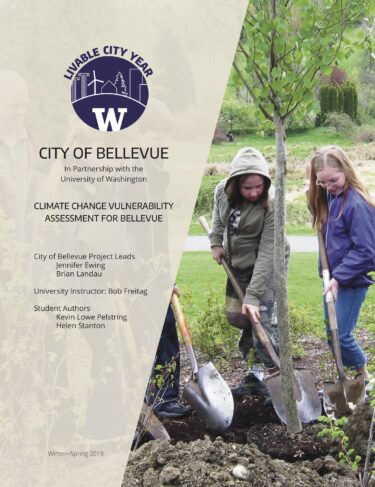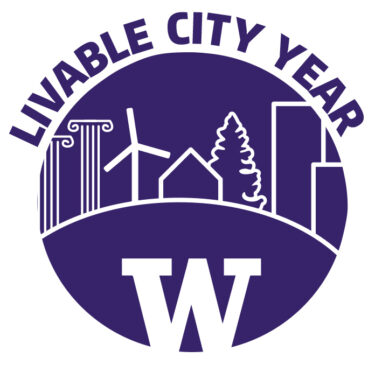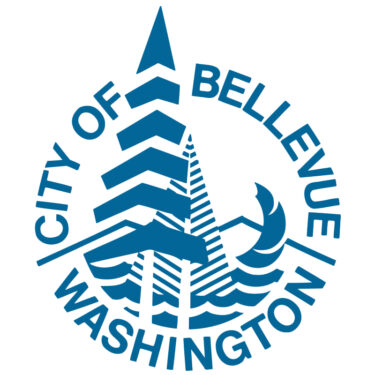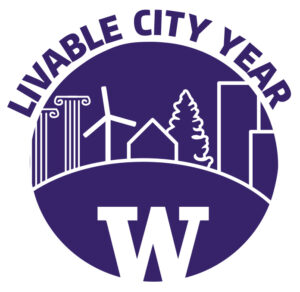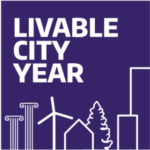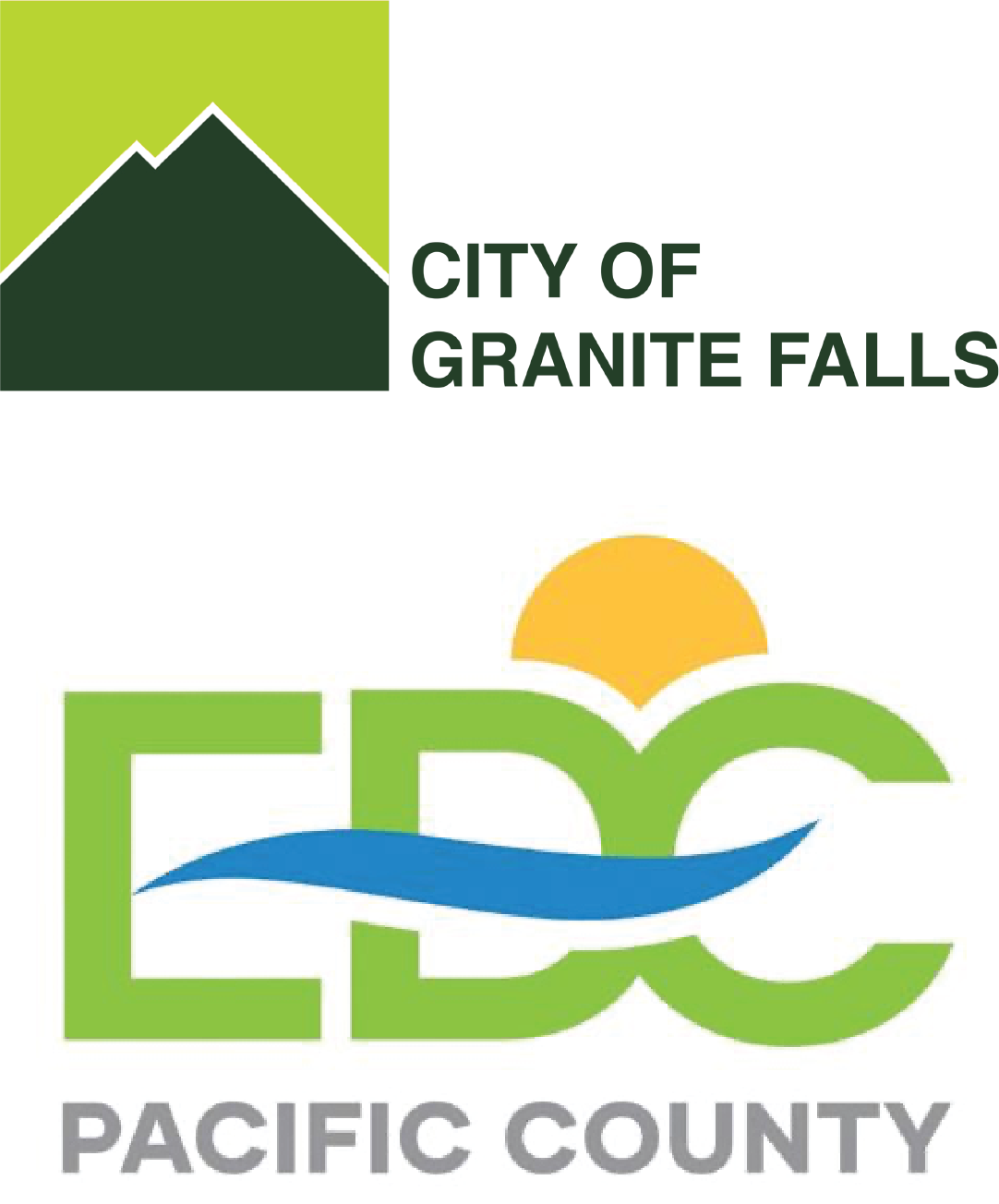Climate Change Vulnerability Assessment for Bellevue
2018-2019 Livable City Year – Bellevue
City Project Leads: Jennifer Ewing, Community Development; Brian Landau, Utilities
UW Instructor: Bob Freitag, Urban Design & Planning
Course: URBDP 549 Hazard Mitigation Planning
Project description:
Bellevue anticipates great change in coming years and decades as a result of climate change and population growth. Uncertainty and potentially catastrophic consequences related to the compounding effects of climate change and increased urbanization are important for the City of Bellevue to evaluate and incorporate into its long-term planning now. University of Washington (UW) graduate students taking a Hazard Mitigation Planning course considered three topics of particular concern to the City of Bellevue:
- The tangible effects of climate change on the well-being of current and future residents of Bellevue
- The vulnerability induced by rapid urban development and more frequent and intense storms
- The role of urban tree canopy culturally and aesthetically, as well as for developing resilience to climate change
We applied scenario planning to each of these three topics to see
how changes in precipitation and heat interact with urban systems. Scenario planning is a systematic method for envisioning potential outcomes produced by complex and uncertain factors set in the future. Each scenario is the result of plausible events and environmental drivers, and would require different courses of action and strategic decision making to occur. Thus, scenario planning serves as a lens for planners to envision possible, probable, or plausible future outcomes of climate change and urbanization. Equipped with such information, planners can attend to possible future events and conceptualize plans and course of action accordingly.
While attending to urban growth projections, resilience to climate change should be considered a primary goal for Bellevue over the next few decades. This is because resilience to climate change is essential for maintaining the city’s livability. To prepare for climate change, the City of Bellevue may need to modify or replace infrastructure, protect or reinforce features of the natural environment, and accommodate new needs and vulnerabilities of residents. Starting points for the City to become resilient to climate change include:
- Providing access to shelters for people in need of refuge
- Increasing access to medical care
- Incentivizing renewable energy opportunities
- Promoting and dispersing mixed-use social infrastructures
- Retro fitting aging development
- Expanding the use of low impact development
- Redesigning parks
- Installing onsite water detention features in up-zoned areas
- Creating a comprehensive tree inventory
- Establishing a regional urban tree canopy climate stressors research organization
- Facilitating assisted species migration
- Improving wildland fire mitigation and adaptation
This document has been produced to encourage rigorous public planning efforts. The suggestions offered represent the efforts of student teams, as well as the work of two individual students who further expanded the scope of research. The suggestions are not the result of a public planning process, and, therefore, this document cannot be considered a plan. Rather, this document may be considered as a starting point for subsequent planning efforts.
Part of the 2018-2019 Livable City Year partnership between the University of Washington and the City of Bellevue.
See all Livable City Year projects in Bellevue that UW students and faculty worked on during the year-long partnership.
